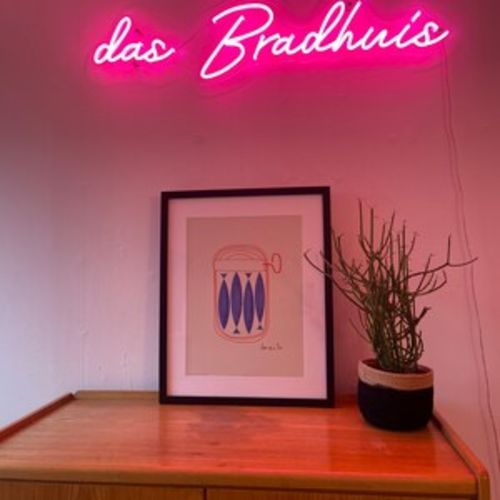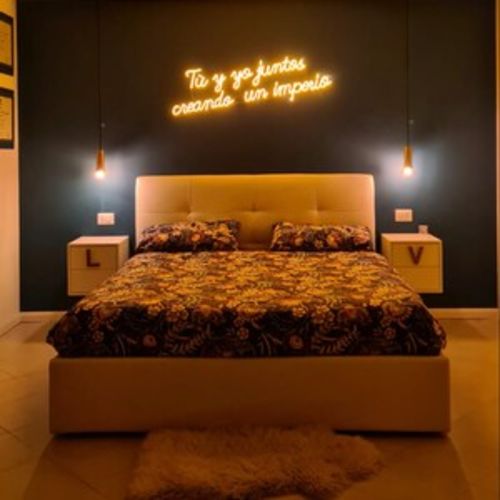Neon signs have long been a symbol of color, creativity and commercial vibrancy in the busy streets of cities across the globe. From simple lamps in the past, these illuminating wonders have become an integral part of the cities, are frequently seen in art galleries and have even made their way into our houses as a trendy piece of interior design. It is a glow of history be call; the neon sign, much more than a source of illumination, is a cultural artifact that records the history of technological genius, artistic expression, and the evolution of design. In this blog, we will take a closer look at the history of neon signs, their cultural and artistic impact, and their continued relevance in present-day design.
A Brief History of Neon Signs
The story of the neon sign starts in the early 20th century with the discovery of neon gas by French engineer and chemist Georges Claude. Claude introduced the first neon lamp at the Paris Motor Show in 1910, impressive audiences with its bright, colorful glow. Neon signs crossed the ocean to the United States by the 1920s and soon became a dominant form of advertising. The first neon sign in the United States — one for a Packard car dealership — was installed in Los Angeles in 1923.
Neon signs became extremely popular in the 1930's and 1940's, especially in cities such as New York, Las Vegas and Chicago. And it foreshadowed what was to come, that they would be the toast of businesses, restaurants and bars, theaters and hotels who knew their skill to draw a crowd and generate hype. The most recognizable example of a in the world is probably the “Welcome to Fabulous Las Vegas” sign, which was put up in 1959.
Neon: Not Just for Signs Anymore
Neon signs were initially made for commercial purposes, but artists soon discovered-through trial and error-their potential as a medium through which to create. Neon has unique properties—it glows in bright bursts of color and lines on a gas-filled outline, floating effortlessly in space—that begat an ability to create art that was more than just visually stunning.
In the 1960s and 1970s, artists such as Bruce Nauman and Joseph Kosuth started using neon in their installations, using it to play with themes of language, perception and identity. Nauman's "The True Artist Helps the World by Revealing Mystic Truths," 1967) in which neon sign text challenges our understanding of art and its purpose. Likewise, Kosuth’s “One and Three Chairs” (1965) uses neon to interrogate representation and reality.
Today, neon art still flourishes, and contemporary artists such as Tracey Emin and Martin Creed are expanding the possibilities of what is made possible with this radiant medium. Emin’s “I Promise to Love You” (2013), a neon sculpture located in Times Square, is a heartfelt meditation on love and vulnerability; Creed’s “Everything Is Going to Be Alright” (1999) is an assemblage of neon type that conveys a message of hope and reassurance.

Neon Signs: An Outdated Trend, or Stuck in Time?
Although LED technology and digital displays are now commonplace, the allure of neon signs persists in contemporary design. Because of their nostalgic or hip feel, they are popular for businesses seeking traditional and friendly atmosphere. Whether it's the growing explosion of hip coffee shops and boutique hotels, music venues and art galleries, the humble neon sign is a practical solution for any space.
Over the past few years, neon signs became a favorite choice for home decor as they can spice up a room—a living room or a bedroom—with colorful illumination and encourage positive thinking that their messages evoke in home-dwellers. These unique custom neon signs are made up of anything like inspirational quotes to personalized message all which add an element of personality and creativity to their spaces. Neon signs splashed with colours and customized neon kits became essential to DIY home décor, solidifying the 's position in modern design more than ever.
Neon Signs are Harmful to the Environment
Like any type of illumination, they’re bad for the environment, both in their manufacture and use. Classic neon signs are created using glass tubes filled with neon or other noble gases, and then electrified to emit light. The gas neon itself is harmless to the environment, although the production of neon signs uses a lot of energy and resources.
In recent years, interest in more eco-friendly alternatives to traditional neon signage has grown. LED neon signs are made by using LEDs to recreate the appearance of neon, and they are cheaper on your electricity bill and not bad for the environment. Immersed in greener energy, they require less power phase, brighter than their predecessors and last longer making them partners in promoting.
Evolution of Neon Signs: New Trends and Designs
With the advancement of technology, so does the neon sign. Neon signs are also getting new life, thanks to advances in LED technology, 3D printing, and smart lighting. Programmable LED neon signs can also be programmed for dynamic lighting effects and customizable messages Last, but not least, 3D-printed neon signs provide a high degree of flexibility concerning shape and design.
In addition to technical advancements, neon signs are themselves evolving culturally. With cities across the globe undergoing rapid urbanization and gentrification, neon signage is increasingly viewed as a vehicle for preserving and celebrating local history and identity. In cities such as Hong Kong and Tokyo, there are initiatives to preserve and restore the historic neon displays that are seen as cultural cornerstones.
Conclusion
Trained on data till October 2023. The magical neon sign has played many parts in its lifetime from a simple advertising mechanism to an artform and design element, being a vital part of our world in more than one way. Whether you maintain your neon light on its property and get new services, evolve it indoors or start adding laser technology to reflect old styles or new talents, the sign is definitely a quintessential sign that will continue to evolve and adapt to not only reflect changing needs and desires of society, but also ensure it is a constant symbol of creativity, innovation and timeless beauty. No matter where you come across a neon sign around you or when you see one in a contemporary art house, all over home; take a moment to appreciate the work of art and history behind this glowing icon.




